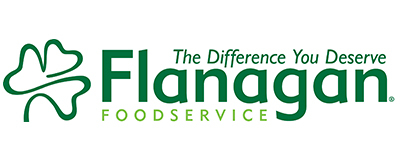
We collect basic website visitor information on this website and store it in cookies. We also utilize Google Analytics to track page view information to assist us in improving our website.

Proudly Canadian owned, we're recognizing a new Canadian invention each week as we celebrate our great country's 150th year!
Paint Roller

1940: In 1940, Torontonian Norman Breakey came up with the idea of a painting tool that allowed anyone to easily paint walls, not just professionals who have time and patience to create a smooth finish.
Breakey envisioned a device that was shaped like a “7” that would hold a fabric-covered cylinder. He created the first roller, using it with a tin tray to hold the paint. Sadly, Breakey was unable to persuade investors to back his invention, and he lacked the funds to produce a significant supply of rollers. Manufacturers were able to easily duplicate his idea and produced their own (very similar) versions of the roller.
Breakey was never given credit for his invention, and did not reap any financial benefits. He may not have been recognized during his lifetime, but his work absolutely changed the lives of painters.
Insulin

1922: Insulin is a protein hormone that causes cells in your body to absorb glucose and use it for energy. Diabetes occurs when your body does not use or produce insulin properly. Though diabetes has been a medical condition for well over a thousand years, the discovery that diabetes is due to an insulin deficiency didn’t occur until the 1920s in Canada.
In 1921, Frederick Banting and Charles Best conducted a series of insulin manufacturing experiments at the University of Toronto. In January 1922, a diabetic teenager in Toronto received an injection of insulin, the first person to do so. He improved dramatically, and one year later in 1923, insulin became widely available (after the University of Toronto gave pharmaceutical companies license to produce insulin free of royalties). Many lives were saved as a result.
In that same year, Frederick Banting and John Macleod (a biochemist and physiologist who provided his laboratory to Banting for testing) received the Nobel Prize in Medicine.
Instant Replay

1955: George Retzlaff invented instant replay while working for CBC’s Hockey Night in Canada in 1955. He used a “wet film” (kinescope) replay of a goal which was then rebroadcast within thirty seconds. (Kinescope is the recording of television on motion picture film; the lens is directly focused on the television screen and then re-broadcast.)
Though the replay was not quite instant (as it was rebroadcast after 30 seconds), it was a pivotal moment in the history of sports broadcasting. Retzlaff also pioneered innovative camera angles that are still used today.
Butter Tarts

1900: The first recipe for butter tarts was published in the beautiful city of Barrie, Ontario in 1900. Wikipedia refers to butter tarts as “one of Canada’s quintessential desserts.”
The actual origin of the dessert (prior to the recipe being published) dates all the way back to the 1600s, when the idea of mixing syrup, eggs and dried fruit was more about using the ingredients on hand than intending to create a delicious treat.
The tart slowly evolved from there, and is now one of the few authentically Canadian recipes that exists on paper (and a personal favourite).
In case you’ve never tasted this delectable treat (!), butter tarts are made using just a few ingredients: a butter pastry shell, super, syrup, and eggs. Raisins or pecans are optional, but encouraged.
Five-Pin Bowling

1909: Thomas Ryan, born in Guelph, Ontario, moved to Toronto in 1905 with hopes of “making it big”. He opened the first ten-pin bowling club in Canada located in downtown Toronto (the intersection of Yonge and Temperance Streets). It was an elite establishment.
At the time, bowling was a “gentleman’s game”, and the men who worked near the bowling club would bowl during their lunch hour. They complained that the ten-pin game took too long; they would be too tired for the rest of the day after lifting the heavy bowling balls.
Ryan adapted the game to have five, lighter pins and a ball that weighed just 2.5 pounds: five-pin bowling was officially born.
Java Programming Language

1995: Java is a widely-used, general purpose computer programming language. It enables programmers to write computer code using English-based commands, rather than in numeric codes.
Java programming was created in the early '90s by a small team of engineers (called the “Green Team”) led by James Gosling. They initially created Java for use on digital mobile devices, though when the programming language was released in 1996, it became more centered to use on the Internet. It allowed developers to create animated webpages.
Today, Java is the force behind many smartphone apps, e-business solutions, and navigation tools.
Superman

1933: Superman (and his alter-ego, Clark Kent) was created by Toronto-born Joseph Shuster and Jerry Siegel of Cleveland. Shuster and Siegel were both high school students when they created the superhero and his story.
Initially, Superman was a villain determined to dominate the world. Siegel later re-wrote the character to be a hero, and spent the next six years searching for a publisher.
Superman’s debut appearance as a comic was in Action Comics in 1938, and the following year, a self-titled series was launched. Superman appeared in the McClure Newspaper Syndicate in 1939, and became a radio serial in the 1940s (1940-1951). In the '50s, a Superman television series was aired, and in 1978, Superman: The Movie is released, the first of many Superman-centered films.
To date, there have been 7 live-action television series, 7 animated television series, and 10 films about Superman and his story.
Trivial Pursuit

1979: Once called “the biggest phenomenon in game history” by TIME Magazine, Trivial Pursuit was invented in December of 1979 by Chris Haney and Scott Abbott while they played a game of Scrabble. Though they came up with the concept of Trivial Pursuit in only a few short hours, the game was not commercially released until November, 1981.
Initially, the game was being sold at a loss; it cost $75 to manufacture the game, and the game was being sold to retailers for $15. In 1983, Trivial Pursuit was licensed to Selchow and Righter (a major U.S. game manufacturer), and after a successful public relations effort the game became a household name.
To date, more than 100 million copies of Trivial Pursuit have been sold, with varying editions like the Star Wars Classic Trilogy Collector’s Edition (1997), Totally ‘80s (2006) and Trivial Pursuit for Kids (Volumes 1 to 6).
Computerized Braille

1972: The printing of braille was a slow and expensive process before Roland Galarneau, a legally blind Québécois, invented a new, efficient solution. In May of 1972, after the idea had come to him in a dream, Galarneau developed “Converto-Braille”: an electromechanical computer linked to a teletype machine that scanned and translated texts into Braille at a rate of 100 words per minute (ultimately eliminating the need to know Braille in order to transcribe a book).
At the time of Galarneau’s idea, microcomputers had yet to be invented. For the next five years, Galarneau built (from scratch!) the computer that could transcribe written texts into contracted Braille. He received a grant which went toward installing a micro-chip into the computers, which led to the publication of The Regional, a weekly newspaper in Braille.
Today, braille translation software can transcribe most languages as well as math and music.
AM Radio

1906: Reginald Fessenden, chief chemist for Thomas Edison and pioneer of wireless radio, invented AM voice transmission (later used as AM radios) as we know it today.
In 1897, after much research trying to improve the Morse code system without any luck, Fessenden took a break and was vacationing near Peterborough, Ontario to clear his head. During his holiday, ripples on a lake sparked the idea that perhaps sound could travel out from a centre continuously in the same way.
He spent the next nine years perfecting his idea in Massachusetts, and in 1906, Fessenden achieved 2-way voice transmission by radio between Machrihanish, Scotland, and Brant Rock, Massachusetts. It was Christmas Eve that Fessenden successfully made the first public broadcast of music and voice.
Despite his success, Fessenden did not receive recognition for his invention, and many of his patents were later adopted without his consent during World War II. Finally, in 1928, the US Radio Trust paid him $2.5 million in recognition of his contributions to radio technology.
Nanaimo Bars
1952: The Nanaimo Bar originated in Nanaimo, British Columbia – but that’s about all its residents can agree on when it comes to the origins of the chocolate, custard and coconut-graham base squares. Some say that the bar originated with Mabel Jenkins of Cowichan Bay, B.C., who submitted the recipe to a community cookbook in the 1950s. Others say the Edith Adams’ Cookbook published the inaugural recipe in 1953.
Nevertheless, this delicious treat is a treasured Canadian invention. The city of Nanaimo features many adaptations and variations to the favourite dessert, including deep-fried Nanaimo bars, martinis, lattes, cupcakes – even Nanaimo-themed pedicures!
In 1986, the city of Nanaimo held a contest to find the ultimate Nanaimo bar recipe. Joyce Hardcastle’s recipe was the winner of almost one hundred entries. The recipe is now holds the title as the official Nanaimo Bar recipe of the city. Her secret ingredient to the prize-winning treat? Unsalted butter; it mellows the sweet flavours of the bar. Nanaimo bar image provided by The Original Cakerie. |
 |
The Snowblower

1925: Dairy farmer Arthur Sicard invented the snowblower almost one hundred years ago in Saint-Léonard-de-Port-Maurice, Québec. During the winter, roads to the local town were too snow-covered for Sicard to deliver milk. In the summer, Sicard took note of the farming combines that would cut wheat and eject straw from the back of the vehicle. He was determined to create a vehicle or machine that could do the same thing to snow.
Sicard’s first few attempts were failures, and his neighbours thought him to be crazy. Finally, he created a vehicle that worked: a blower was attached to the front of a truck chassis and was propelled by a motor, with an adjustable chute. Despite initial mockery of his invention, Sicard was hired to clear the streets of the town.
A dairy farmer no more, Sicard patented his invention, founded Sicard Industries Ltd., and sold his first commercially-available snowblower to the town of Outremont, Québec. This invention allowed operators to propel snow (soft, hard, or packed) over ninety feet from the blower or directly into the back of a truck. In the 1950s, the first “walk-behind” snowblower was invented.
Though he passed in 1946, Sicard’s name lives on; Sicard Group (located in Québec and New York) supplies a complete line of industrial snowblowers, runway sweepers, and other related products to airports, municipalities, and military bases worldwide.
The Goalie Mask

1959: Initially considered a coward by hockey fans and purists, Montréal Canadiens goalie Jacques Plante was the first player to wear a mask during a game.
After a particularly bad hit to the face with a shot by Andy Bathgate of the New York Rangers, Plante left the ice to be stitched up. When he returned, he brought him with the homemade fiberglass mask he would wear during practices. Though he was mocked, Plante continued to wear the mask, and the Montréal Canadiens went on to win eighteen consecutive games that season. The goalie mask was officially born!
Since Jacques Plante’s fiberglass creation, the goalie mask has gone through many different designs to drastically improve players’ safety. (Plante had experienced over two hundred stitches and had his nose broken four times before he decided to protect his face.)
Today, all goalie masks are made of fiberglass, feature a “cage”, and can be decorated with cartoon characters or other designs.
It's no wonder we are proud to be Canadian!
References
Canadian Media Director’s Council Media Digest; Canadian Consumer Insights. 2014-2015.

